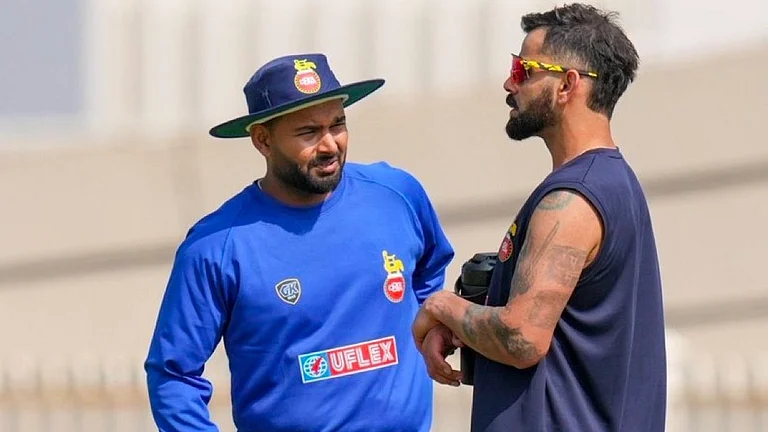At a time when WTO multilateral negotiations to complete the Doha Round aremissing crucial deadlines, emerging countries like India are finding thatregional trading arrangements don’t offer much hope either. For instance, theseven members constituting the South Asian Association for Regional Cooperation(SAARC), notably, India, Pakistan, Nepal, Bhutan, Bangladesh, Sri Lanka andMaldives intend to operationalise a South Asian Free Trade Agreement (SAFTA) bymid-2006 but sub-continental politics might well subvert this objective.
India, no doubt, is the dominant economic power in the South Asian region butis out of step with the fast-paced political developments in its neighbourhood.Nepal is a case in point with India being completely out of sync with thepopular upsurge for democracy in that country. Sri Lanka is experiencing arenewed flare up in its civil war with the Tamil separatist organization, theLTTE. As if all of this weren’t bad enough, Bangladesh and Pakistan -- who arerapidly becoming failed states -- resent India’s dominance and are stepping upcross-border terrorism.
Is it, then, any wonder that SAFTA might well be the casualty of politics? Asis well-known, tensions between India and Pakistan have virtually put paid tocooperation, if not integration, in South Asia. What sort of trade ties ispossible when Pakistan doesn’t even extend most favoured nation (MFN) statusto India? "We are all committed to faster trade; We are all pledged to freertrade. We are all wedded to fairer trade. That is triple meaning of the F in SAFTA"stated Jairam Ramesh, India’s minister of state for commerce, at a SAFTAministerial in Dhaka.
There is, of course, a fourth meaning as SAFTA indeed is a failed tradeagreement till now. Even after two decades of SAARC, intra-SAARC exports workout to only 5 per cent of total exports as against the meagre share of intra-ASEANexports of 20.4 per cent. At the 13th SAARC summit in Dhaka last year, India’sPrime Minister Manmohan Singh indicated a willingness to adopt a liberal openskies policy within the region. But physical connectivity itself remains a majorproblem, thanks largely to politics rather than economics driving the relevantdecisions in this regard.
Afghanistan thus is being admitted as the eighth member of this regionalgrouping but Pakistan steadfastly refuses to allow India transit facilities tothis country and Central Asia due to its tensions with India. Pakistan alsorefuses to import items like tea from India and instead buys it from Kenya. "Thebiggest obstacle to normal direct trade between our two countries is Pakistan’spositive list approach to imports from India, when India gives Pakistan MFNaccess to the Indian market" argued Shiv Shankar Menon, India’s HighCommissioner to Pakistan.
"Even if Pakistan finds it difficult to give India MFN status, I fail tounderstand why Pakistan does not place on the positive list goods that shepresently imports from other countries, thus introducing an element of faircompetition that will benefit the Pakistani consumer and importer", added theHigh Commissioner in his recent address on India-Pakistan Trade and Commerce tothe Sarhad Chamber of Commerce in Peshawar, Pakistan. Due to such factors,informal trade has ballooned to $2.5 billion or 3-times the current level ofdirect trade between the two countries.
While Indo-Pak tensions are a hardy perennial, recent political developmentsin the South Asian region also cast a long shadow over prospects for regionalintegration. There is, of course, no way of predicting their impact onintra-regional trade flows but certainly there is a lot that India as a dominantpower can do to bring economics back in command through unilateral tradeliberalisation. This implies ensuring greater market access for goods of failingstates in SAARC so that they acquire a greater stake in India’s rise as aglobal economic power and benefit from it.
Unfortunately, for various reasons, this has not been happening, which hasonly deepened their resentment over India’s dominance. As if all of this weren’tbad enough, every one of India’s SAARC neighbours has registered massive tradedeficits with India. The loudest clamour for a unilateral opening up of India’smarket emanates from Bangladesh, which registered a deficit of US $1.1 billionin 2002-03, which further widened to $1.5 billion in 2004-05. Nepal’s deficitwith India too has ballooned from US $68.6 million to $388 million over thisperiod.
The combined deficit of SAARC members with India thus rose from $2.2 billionin 2002-03 to $3.4 billion in 2004-05. India must, therefore, import more fromits neighbours so that they acquire a greater stake in its rise as an economicpower. To be sure, measures like importing jute bags from Bangladesh, forinstance, can make a difference. But this neighbour wants more bilateral issuesto be granted like transit rights and has even linked such issues to the signingof a tripartite MOU for transporting gas from Myanmar to India.
India so far hasn’t given into Bangladesh’s demands and is now exploringthe possibilities of transporting gas from Myanmar via the Northeast. Eventhough all indications point to progress in the Iran-Pakistan-India gas pipelinequestion, this is another issue which sees the long shadow of politicsbedeviling prospects for economic integration in the region. The moral of thestory is that if India still wants to make a go of SAFTA, bolder, unilateralliberalisation is imperative. Or else the prospect is of an unruly neighbourhoodsubverting economics.
N Chandra Mohan is a Delhi-based analyst of economic and business affairs






















